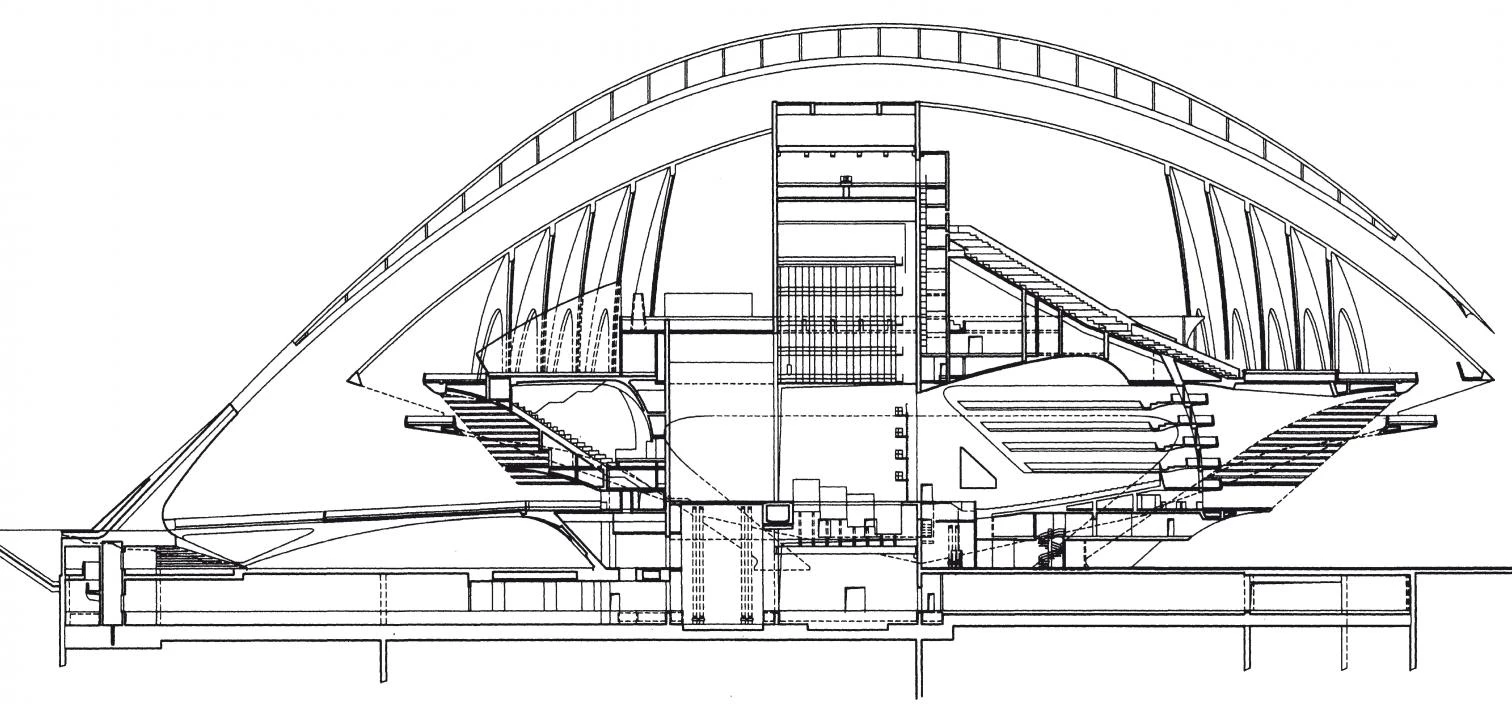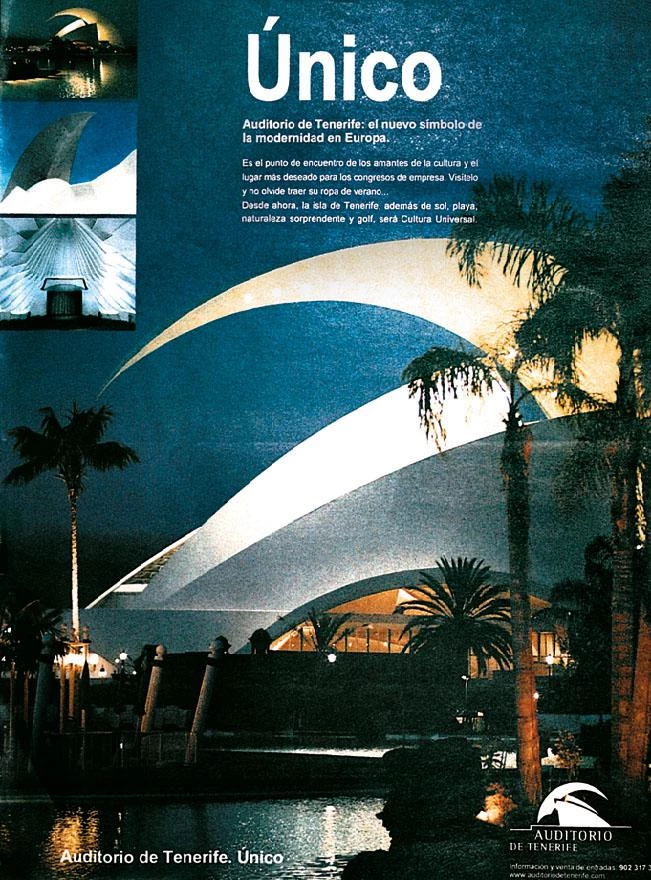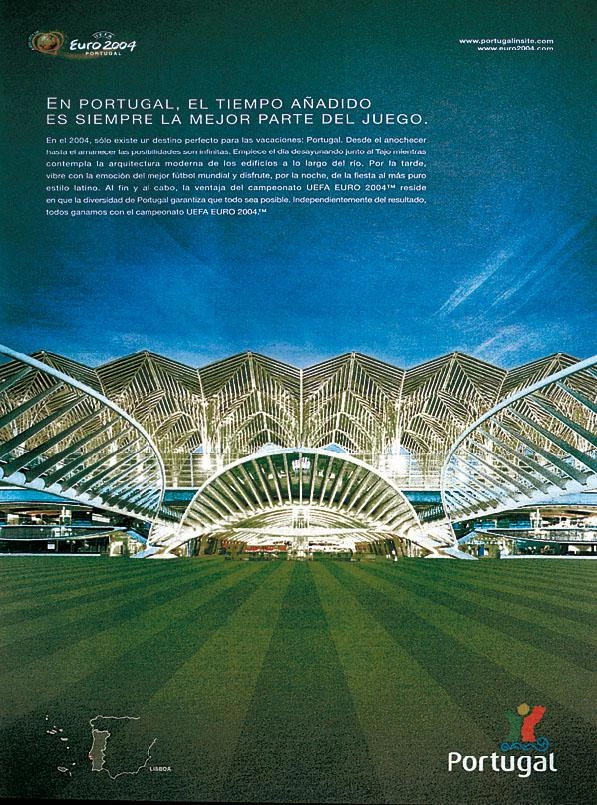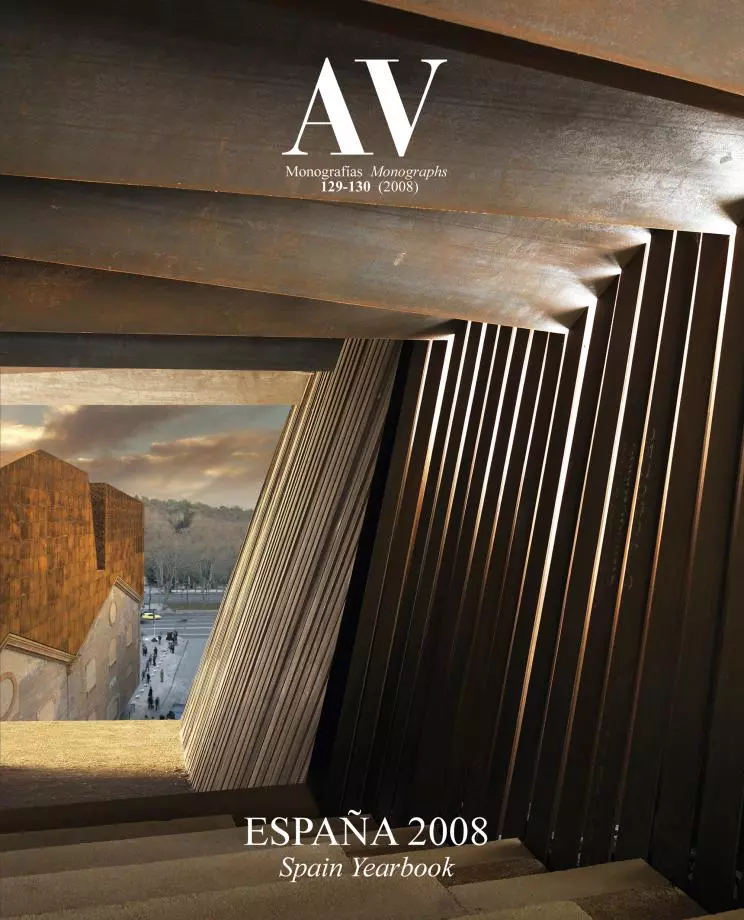Dogs in Dialogue

Whenever in Valencia, there are two rites I never miss: a visit to the Lonja, a 15th cen¬tury Gothic guildhall which is the finest in the Mediterranean, raised by the great masterbuilder Pere Compte with eight salomonic columns that soar up to the 57-feet high vaults where they open like palm trees; and a paella at the Malvarrosa beach, the delicious rice dish that blends effortlessly with the mild breeze and the blue shadows of noon in this most sensual of lands. This time is no ex¬ception, but the familiar venues are shattered by the frenzy of the America’s Cup, held in these waters after a booming Valencia was selected as venue, among a hundred odd cities, by the landlocked holder of the trophy, the Swiss Alinghi.

El rascacielos helicoidal de Calatrava en Chicago será un hito urbano, como lo es ya la Ciudad de las Artes y las Ciencias para Valencia.
At the seaside, the sailing boats hoping to chal¬lenge the current defender race in front of the crowds that gather on the piers of the new port, while VIP visitors use the cantilevered decks of the laconic David Chipperfield-designed America's Cup Building, whose exclusive restaurant serves more sushi than paella. And in front of the Lonja, all the attention is on the Art Nouveau central mar¬ket selected by Miuccia Prada – who also chose Renzo Piano to build the syndicate’s base at the port – to throw a huge party shortly before her Luna Rossa beat USA’s Oracle, and picked as his favorite structure by Bernie Ecclestone, in Valencia to launch a new Formula-1 urban circuit that will link the yacht race scenarios with Santiago Calatrava’s City of Arts and Sciences, a colossal complex by the hometown architect that was also used as a bom¬bastic backdrop for the Pope’s visit in 2006. After all, the hold of Calatrava in the public imagination is such that his architecture could not miss the appointment with the largest sports event ever held in his native town, and the city is building in haste a 230-feet tall covered piazza – with an estimated cost of $80 million – to be the stage of the America’s Cup closing ceremony.

So it is no wonder that this critic falls fatally kid¬napped by the celebratory mood of the place, sees turning torsos and Chicago spires in the torqued pillars of the Lonja, finds echoes of Calatrava in the crustacean shells and fishbones of his paella, and ends up overhearing the softly barked dialogue of two dogs in the dozing haze of the torpor that fol¬lows the meal. To hear dogs speak does not seem surprising in this city of wonders, and their using the names famously given by Cervantes to the lo-quacious couple of his Exemplary Stories blurs the limit between dream and fiction; but the dogs ap¬pear well schooled in architecture and music, a rather extraordinary circumstance that keeps the critic awake and attentive, fighting the slumber of the siesta under the mellow shade of the cane canopy.

El futurismo del Palacio de las Artes valenciano ha sido admirado por sus espacios fluidos y su apariencia dinámica, y a la vez censurado por sus deficiencias funcionales y el tradicionalismo de la sala italiana en herradura.

Scipio. Berganza, my friend, it is too hot to roam the beach, and under this woven roof we can find fresh sand to lie on and perhaps some leftovers to fill the belly, which is already roaring.
Berganza. Brother Scipio, we shall share what¬ever we find, but most patrons seem still busy with their meals, so we may have to wait awhile.
Scipio. In the meantime, perhaps you can tell me something about your scouting visit to this huge precinct which they call City of Arts and Sciences, the most amazing array of structures I have ever seen, and that I have not yet ventured to enter, as it fills me with wonder and awe. Is it a good place for us to find shelter and food, and maybe company?
Berganza. Abandon all hopes of merry company, for the few dogs I saw were on leash, and beware you do not end up laced yourself. Free creatures there were not, and strayed dogs would starve in that scorched desert. The colossal buildings leave no places to hide or take unheeded shelter, rubbish is scant and hardly edible, as if the visitors of these haunting temples fed on plastic. Only the crowds of schoolchildren leave a decent trail of half munched sandwiches! No, these seaside sheds are much better residences for dogs like you and me.
Scipio. I see you call them temples, and I imagine you mean to say the structures are so vast and monumental that they are fit for the cult of gods, althoughwhich kind of gods I do not know. Not the god of dogs, this to be sure!
Berganza. Our god is a patch of shadow and a crust of bread. Theirs are more imposing, science and art, although for what I could see, the Museum of Science is mostly concerned with entertainment, and the just reopened Palace of the Arts is dedicatedto spectacle, the most significant being the building itself, moored in the site like a big spaceship lost in space-time during a stellar trip.
Scipio. Now you sound like our admired ancestor, the charming Russian Laika, who preceded the humans in space travel when she orbited on the Sputnik! But behold your tongue, friend Berganza, that by placing entertainment and spectacle as the purpose of this monumental endeavor you are behaving like a hard-to please preacher for whom nothing is sufficiently holy.
Berganza. Maybe you are right, Scipio, and we should not complain about the gods of the humans, however futile and shallow. After all, we are notfooting the bill, and the $400 million of the Palace would not have been spent in food and shelter for us dogs! Our only hope is to become sacred animals of sorts, in a new religion started by a lover of pets.
Scipio. A pet I do not feel, and as regards religion, is not music a worthy object of cult? If you take out the 780-feet long steel beak that hovers atopthe Palace, and the shells faced with white trencadís that resemble what in lower beings is called exoskeleton, it seems you are left with a rather conventional opera house, horseshoe and all. This much I have been told. But you have been there, and can give me more details. Beyond the spectacular profile, is there a good hall where music can be performed and revered by all those that find nothing more worthy of devotion? Because you know it is said that these temples of sound must be judged with your eyes closed.

Berganza. Closed indeed, because these large Italian horseshoe theaters have many seats from which you can hardly see the stage, and opera audiences have the dismaying habit of trying to please the eye, so only when we convince them to keep their eyes shut will the building obtain the applause it undoubtedly deserves. I myself did not manage to get in, in spite of my long friendship with a police dog that smells the hall for bombs every time an authority is announced in a concert, but hanging around the openings hoping for a bite from the catering has given me some tips.
Scipio. Some tips, and you argue like an expert music critic! But I can feel you are in a satiric mood, and must ask you again to be watchful of your tongue. As my namesake in the Cervantes story said, “I will allow you to gossip a little, as long as it is to enlighten rather than draw blood.”
Berganza. My friend Scipio, you accuse me of highfaluting arguments, and now you back your claims with literary quotations! I shall not trail behind, and repeat what I heard a certain Foucault said once, when viciously attacked by blood-stained critics: “Blanchot teaches that criticism begins with attention, presence and generosity.” A good guy, this Blanchot! But I will profit from your permission to gossip a little, and indulge in some idle commentary, because it was my privilege to overhear a dialogue between the music critics for the two main newspapers in Spain, incidentally located in opposite political fields, when the Palace of the Arts was first inaugurated in October 2005.
Scipio. I did not know you were in Valencia then! The Queen came to open the opera with a Spanish program that featured fragments of Carmen under the baton of Lorin Maazel. But it was a premature opening, and the theater closed again until now.
Berganza. Yes, I was already here, and I can see you have a good memory. The opening was indeed, as a pedant would say, infelicitous, and the critics were dismayed. Straining my ear, I captured bits like “culture of appearances,” “empire of the ephemeral,” “vanities,” “exhibitionism,” “fireworks” and “culture of squander” from the El País critic; and “the worst is what cannot be mended,” “when I entered the hall I turned into stone,” “one cannot build a 21st century theater following the rules of the 18th and 19th” and “never in my life have I faced such a disappointment,” from the music critic of El Mundo. A rare unanimity, if I may say so.



Los anuncios muestran la gran popularidad de la arquitectura de Calatrava, símbolo ciudadano en Santa Cruz de Tenerife, Lisboa o Valencia, y eficaz argumento de marketing inmobiliario en la torre residencial de Chicago.
Scipio. Has it been any better this time? Because after the partial remodeling of the hall, the program was much more ambitious, with a new production of Wagner’s Tetralogy by La Fura dels Baus and Zubin Mehta. Starting with The Rhinegold and The Valkyrie, to be followed by Sigfried in 2008 and Twilight of the Gods in 2009, even a music ignorant like me can see they have tried to make a splash.
Berganza. And successfully, for what I hear, with Juha Uusitalo as Wotan and Jennifer Wilson as a Brünnhilde with shades of Papagena. No roles for dogs, I am afraid, even talking ones like us both. Maybe Wagner and La Fura blend well with the grandiloquence of Calatrava, who knows. The architect must be pleased, because the Wagnerian launch kicked off a month of May in which he has been in the news practically everyday, although not always for good reasons.
Scipio. Yes, I am also aware of his ubiquitous presence in conversations of late, but it worries me that you may slip again into what my namesake called “the cursed plague of gossip,” that “will earn us the title of cynics, which means slanderous dogs.”
Berganza. Do not rush to stop me, my remarks were innocent. There is no harm in reminding that this month he won a first legal battle against Bilbao city, which had allowed a rather awkward footbridge by Isozaki collide with his own gracious pedestrian bridge over the river; he ran into more trouble in Venice, where a new structural study has delayed again the completion of yet another pedestrian bridge, this time over the Grand Canal; he has gotten the final go-ahead for his Chicago high-rise, which, as his wife Robertina claims, will be called ‘The Calatrava’ whatever name the developer chooses; he has been commissioned a new railway station in Huelva and a new opera house in Palma de Mallorca, this one a $140 million project that th president of the region was prevented from announcing because the electoral board considered that the architect was being used as a political prop; he is – almost – the only living architect and the only Spaniard in a blockbuster launch of ‘the 12 geniuses of 20th century architecture’ book series; and he is the subject of a megabook released by Taschen, selfdescribed “publishers of art, anthropology and aphrodesia.” The work of Santiago Calatrava falls probably into any of those fields, so I hope you will not put me to shame for wicked behavior.
Scipio. Enough is enough. When you do not expel Calatrava’s PR, you veer towards toxic gossip. If the Pope, the America’s Cup and Ecclestone’s Formula- 1 all want Calatrava as a backdrop, this surely means something. Icons may be trivial and expensive, but why do cities compete for them?
Berganza. Forget architecture, I see a benevolent waiter leaving some remains of the meals on top of a newspaper, and my bowels are killing me!
Scipio. But beware of practicing your budding reading skills in the paper, your friend Calatrava is sure to be discussed in it! When I opened my eyes I saw the dogs gnawing some bones in the back of the shed, and still sleepy from the paella I remembered the last one I shared with the mayor of the city, a forceful lady whom I have seen chide both Foster and Chipperfield, yet cannot imagine but in love with Santiago Calatrava.






